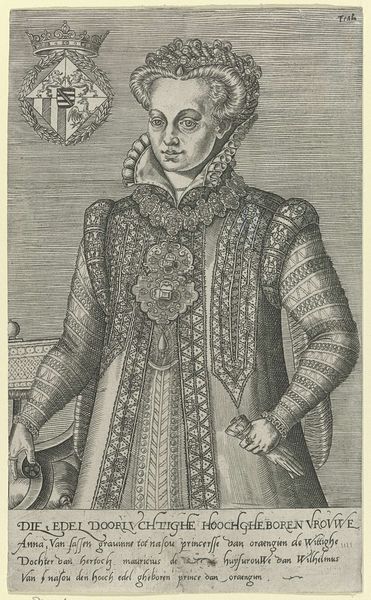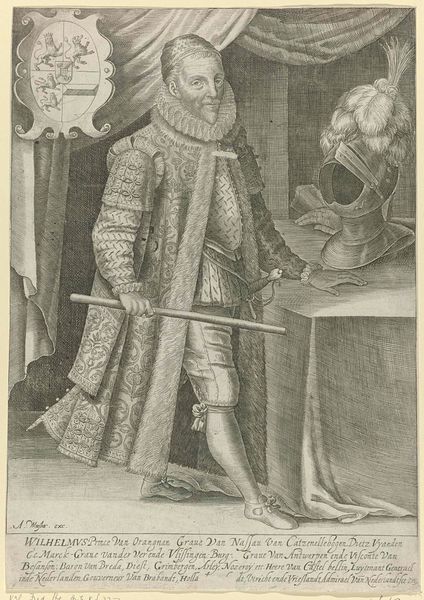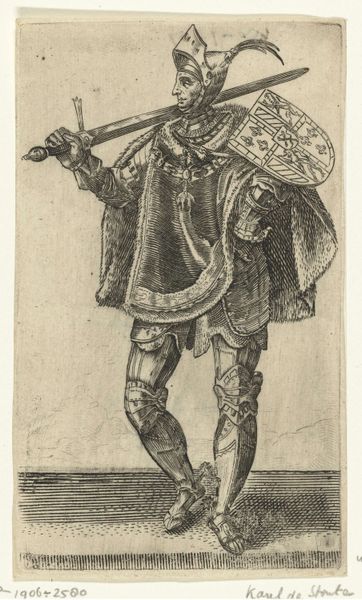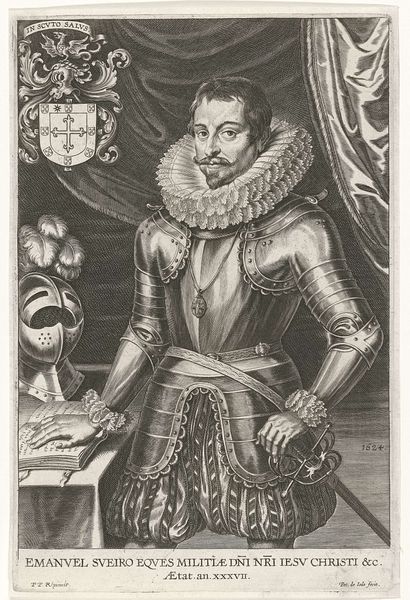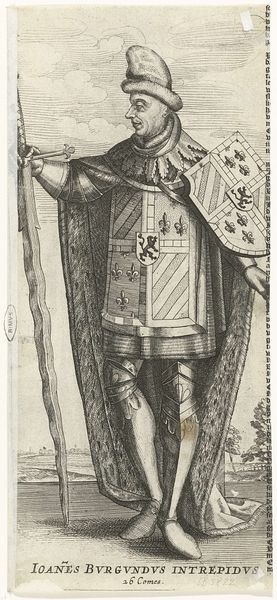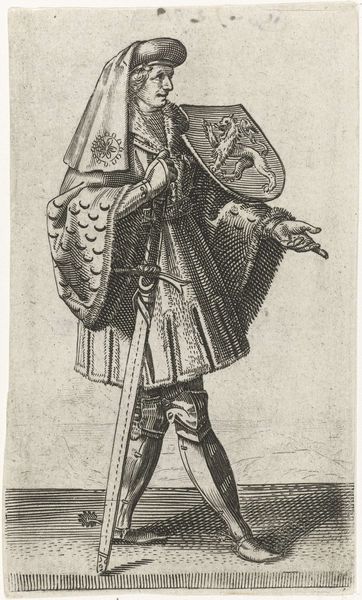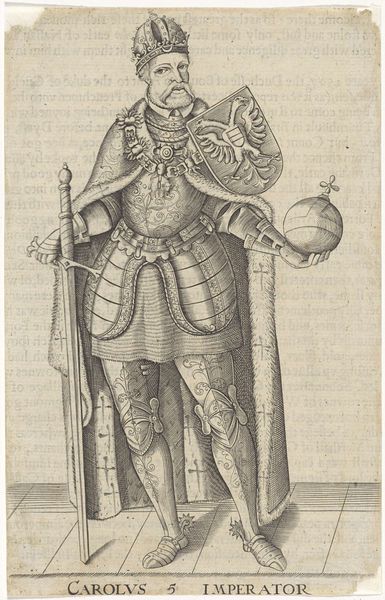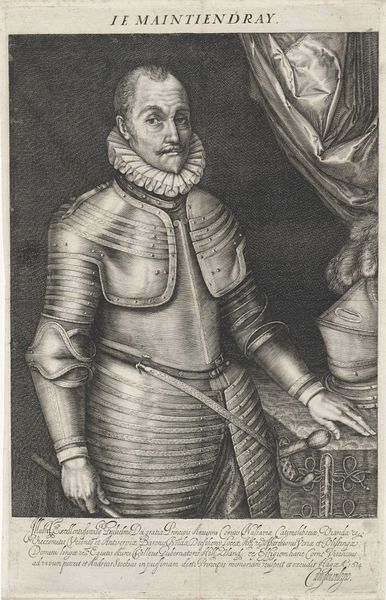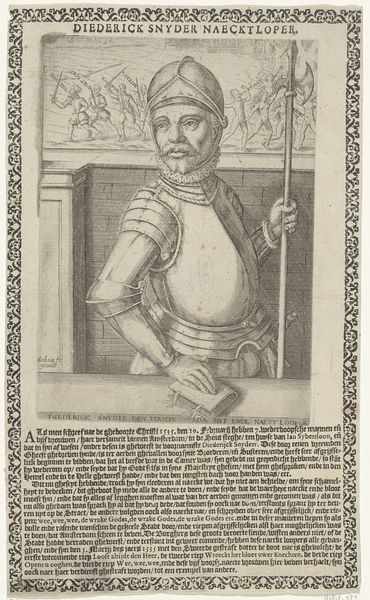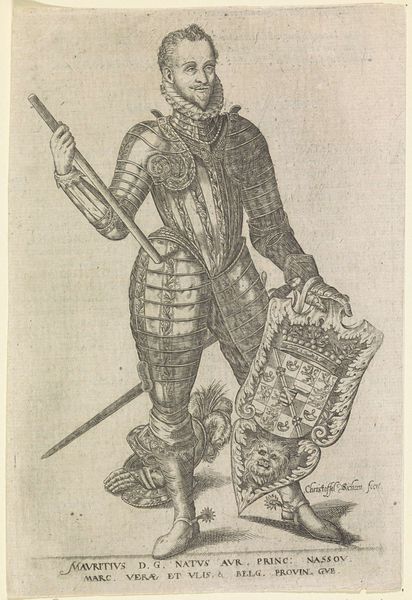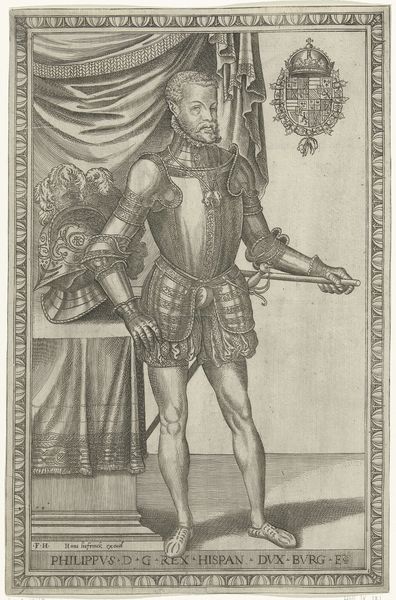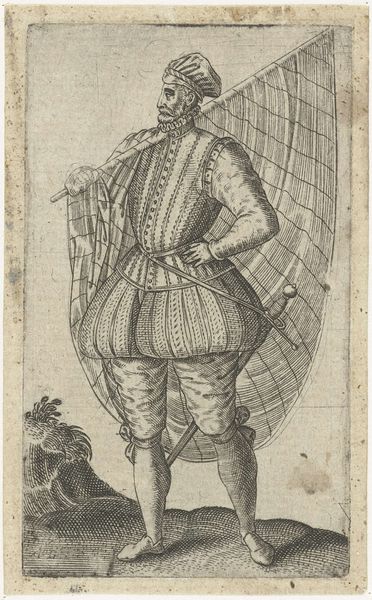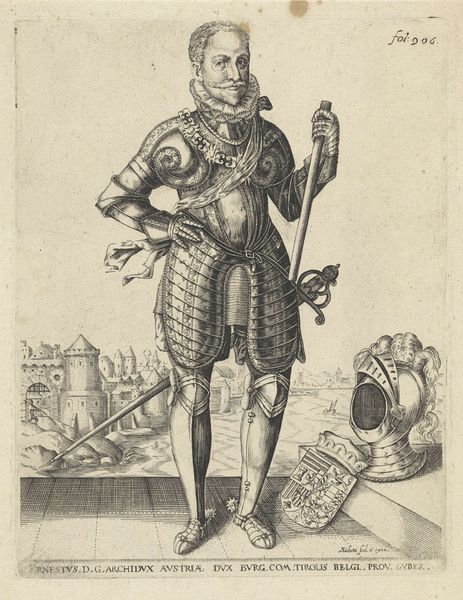
print, engraving
#
portrait
#
medieval
# print
#
pen illustration
#
old engraving style
#
figuration
#
11_renaissance
#
line
#
northern-renaissance
#
engraving
Dimensions: height 181 mm, width 113 mm
Copyright: Rijks Museum: Open Domain
Curator: Immediately striking is the sheer weight of detail rendered in simple monochrome. Look at how every surface, every fold is meticulously described, from the curling hair to the intricate patterning on his armor. Editor: I am pleased to present "Portret van Willem I, prins van Oranje" by Abraham de Bruyn. The print dates from between 1565 and 1568. It is a remarkable example of portraiture from the Northern Renaissance, currently held here at the Rijksmuseum. Curator: What I find particularly arresting is the framing of William within this graphic space. It’s as if the coat-of-arms and architectural vignette vie for dominance alongside the imposing figure. How do these embedded images play off the symbolism of leadership and identity? Editor: This work epitomizes the layered symbolism common in portraits of the period. The armor is not simply protective gear; it represents the prince's role as a military leader. His lineage and dynastic ambitions are expressed in the crest. His figure evokes cultural memories of power, authority and steadfast resolve, deeply embedding him in the cultural fabric. Curator: Absolutely. And the architectural detail, almost like a miniature landscape contained within the frame, could this signify the territory under his domain? Editor: Indeed. Furthermore, note the calculated pose, that object he holds in his hand — perhaps it's a staff or a baton indicating authority — the whole composition speaks volumes, quietly but resolutely, about his perceived status. Curator: It also illustrates a crucial transition in portraiture; where idealized depictions begin to merge with realistic features, it's the beginning of something new. You sense that a likeness, however stylized, was genuinely intended. Editor: Precisely. Considering its form as a print, it speaks to a time where images were key to shaping the perception, of the influential William of Orange. I come away with how deeply rooted visual symbols become integral to cultural memory, molding history over time. Curator: I concur, from an aesthetic perspective, it reveals the fascinating constraints and potential of engraving, to evoke depth, texture, and power with a minimal tonal range. An incredible document of both its subject and its moment in art history.
Comments
No comments
Be the first to comment and join the conversation on the ultimate creative platform.
